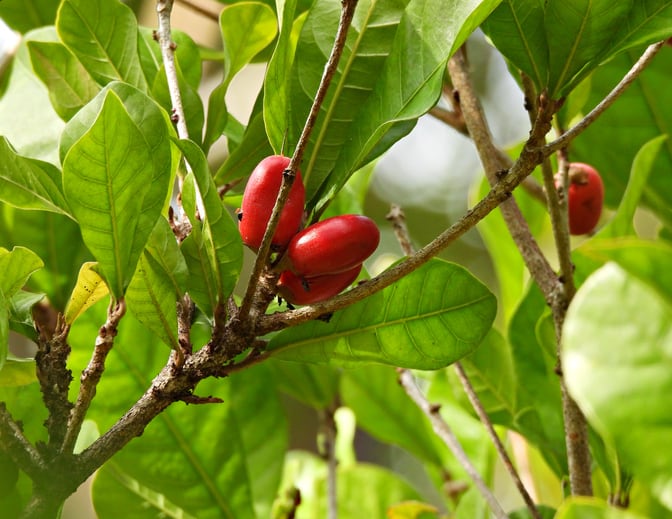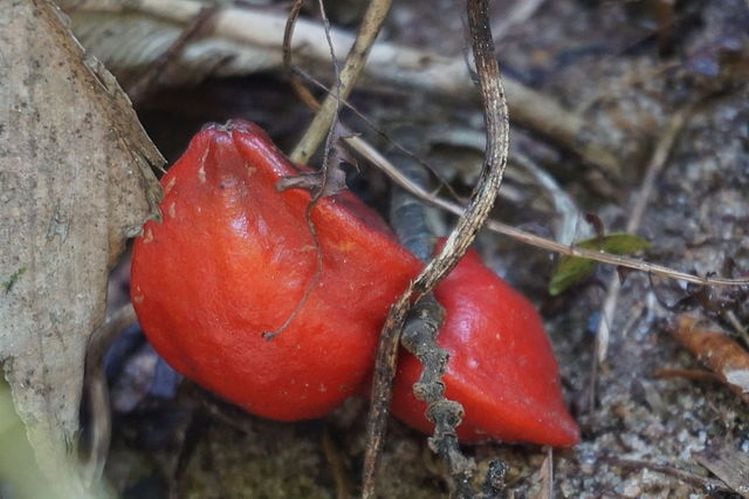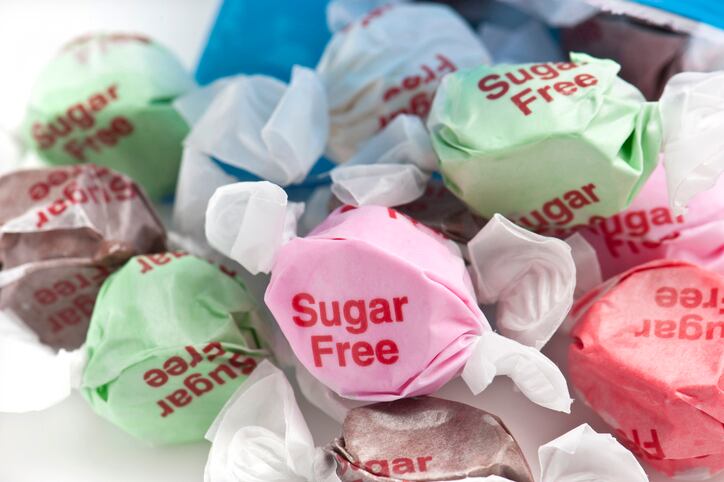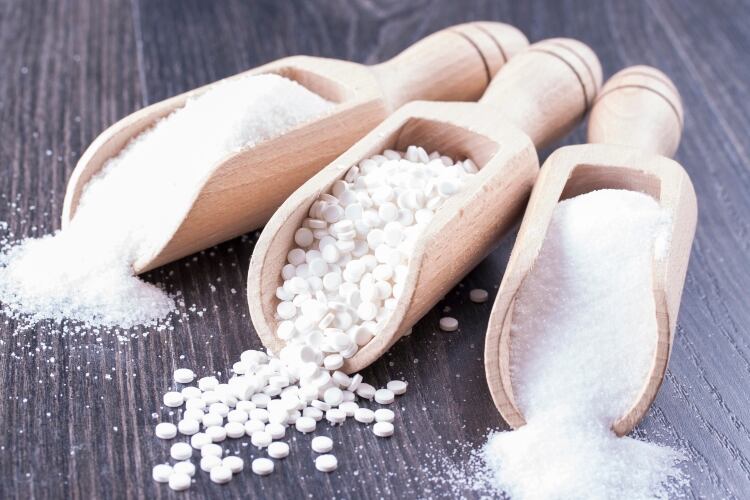Several companies are now deploying synthetic biology to ‘program’ microbes to express sweet proteins, from Roquette and Brain Biotech AG, who aim to take brazzein (an ultra-sweet protein found in oubli berries that they are producing via microbial fermentation) to market in coming years, to Israel-based Amai Proteins, which makes ‘designer’ sweet proteins.
FoodNavigator-USA caught up with two California-based players in this space: Joywell Foods, which plans to launch CPG products containing sweet proteins this fall; and Conagen, which says it can now produce brazzein and thaumatin I and thaumatin II efficiently at commercial scale via microbial fermentation. Both claim regulatory work determining the sweet proteins' GRAS status is advanced.
‘We're now entering a commercialization phase..’ Joywell Foods to launch beverages containing sweet proteins this fall
While stevia and monk fruit high intensity sweeteners have improved significantly as firms have homed in on the more sugar-like steviol glycosides such as Reb M, sweet proteins add an exciting new dimension to the sugar-reduction toolbox, claims Ali Wing, who took the helm at Joywell last year and is launching beverages containing [as yet undisclosed] sweet proteins this fall: “We're now entering a commercialization phase.
“This doesn’t mean we don't still work with a few strategic partners on the CPG side, and my guess is over time, we'll work with more of them. But right now, we're very focused on launching our own consumer products.”

Sweet proteins include:
- Thaumatin I and II: from katemfe fruit, found in West Africa, 2,000-3,000x sweeter than sucrose, readily soluble in cold water
- Brazzein: from oubli fruit, found in West Africa, 500-2,000x sweeter than sucrose, heat-stable, stable in a wide range of pH conditions, and highly soluble
- Pentadin: also from oubli fruit, 500x sweeter than sucrose
- Curculin: from fruit of Curculingo latifolia found in West Africa, exhibits sweet-tasting and taste-modifying properties
- Mabinlin: from seeds of Chinese plant Mabinlang (Capparis masaikai Levl.)
- Monellin: from serendipity berries, found in West Africa
- Lysosome: from egg whites
- Miraculin: from miracle fruit, found in West Africa. It is not sweet in and of itself, but binds to sweet receptors to cause sour-tasting acidic foods such as citrus fruits to be perceived as sweet
The GMO factor: If sweet proteins produced via fermentation do not contain residual levels of genetically engineered microbes, they will not be subject to bioengineered food labeling in the US, although they will likely not meet the criteria for Non GMO Project certification as they are derived from genetically engineered microorganisms and might be considered a 'derivative' of synthetic biology.
Is it commercially viable to produce sweet proteins using microbial fermentation?
As for the commercial viability of producing sweet proteins via microbial fermentation – something Germany’s Nomad Bioscience (which expresses thaumatin II in transgenic plants instead and expects to be on the market by 2024) has argued in regulatory filings is not scalable or cost competitive – Wing says:
“I wouldn't have joined the company to be a commercial leader if I didn't think we had a commercially viable strategy around costs of production and we do believe we have a very clear path to cost competitiveness with sugar.”
Sugary taste profile without trade-offs?
But what’s exciting about sweet proteins in the first place?
They are all different, says Wing, with some a few hundred times sweeter than sugar (brazzein) and others (thaumatin) a couple of thousand times sweeter, but in general they’re exciting because they don’t come with the trade-offs that you get with most commercially-available high intensity sweeteners.
“Taste is the number one attraction, but a protein-based solution [for sweetness] is also attractive as it doesn’t trigger blood sugar [although suppliers of stevia and monk fruit say there’s no evidence that these sweeteners do either] or interact negatively with the gut microbiome; our bodies are very good at digesting and managing protein.”
Consumer-friendly labeling?
Another plus point is that while Joywell’s proteins are not extracted from fruits (they are manufactured by a strain of pichia yeast in fermentation tanks) they are bioidentical to the proteins found in fruits, so could likely be labeled as ‘katemfe fruit protein’ (thaumatin), ‘oubli fruit protein’ (brazzein), ‘serendipity berry protein’ (monellin) or ‘miracle berry protein’ (miraculin), claims Wing.
“There are plenty of opportunities around flavors [for example in some formulations thaumatin might be labeled as ‘natural flavor’], but we're currently pursuing them as a sweetener ingredients.
“Until I have final products through the process, I can’t confirm it [final labeling] for every product, but every indication is that for, say, thaumatin, the expectation of how it’s labeled is ‘katemfe fruit protein'."
‘Multiple drinks platforms in development and multiple proteins going through the regulatory process’
So which sweet proteins will launch first in beverages from Joywell, which has just raised a fresh round of funding?
According to Wing: “We have multiple drinks platforms in development and multiple proteins going through the regulatory process, so we're not sharing this yet.”
She adds: “We're excited about using multiple sweet proteins together, as there are differences between them in things like solubility and heat stability and taste profiles, so thaumatin has a really nice upfront sweetness, for example, while brazzein is really soluble. The one that’s quite different is miraculin, which is a taste modifier [rather than something that itself imparts sweetness], and it's a different beast, if you will.”
Miraculin GRAS notification
Asked about Joywell’s decision to withdraw a GRAS notification about miraculin sourced from miracle fruit berries following questions from the FDA, she says: “We're as bullish as ever about miraculin, and we're refiling [this time focusing on miraculin produced by Joywell’s recombinant protein expression platform].”
Noting that Joywell is doing R&D work on “at least a dozen” sweet proteins, she adds: “We're not in a particular hurry [with refiling the miraculin notification] because our first commercial products, which are scheduled to launch this fall, are not miraculin-based products, they contain other sweet proteins.”

Conagen: Scaled production process for brazzein and thaumatin I and II
Conagen, meanwhile, says it now has a commercially viable process to produce thaumatin I and II and brazzein, and is putting GRAS determinations together for both, according to VP innovation, Dr Casey Lippmeier.
Brazzein is 500 to 2,000 times sweeter than regular sugar, has “little to no bitter aftertaste, and helps to reduce sweet linger, reducing taste modulation challenges in the natural sweetener space,” he says.
“They're proteins, so they're more readily digested and metabolized quickly. But the most interesting things about them is that they're just so much more intense than even the rebaudiosides [from stevia plants], so you can use a lot less, and they’re more soluble in water.”
Brazzein is stable in a wide range of pH conditions, retains its qualities after pasteurization, and is readily soluble, making it ideal for sugar reduction across a spectrum of food and beverage applications, he adds.
But he stresses: “It’s not really our [expectation that CPG companies will] use brazzein or thaumatin as standalone sweeteners. Our commercialization partner Sweegen is focused on more holistic sugar reduction solutions taking a number of different sweeteners and combining them in different ratios.”
‘It’s not really our [expectation that CPG companies will] use thaumatin or brazzein as standalone sweeteners’
As for the production process, he says, yeast, fungi, bacteria, and other microbial hosts all have pros and cons as protein production platforms.
For hosts that export the target protein into the extracellular space, you can get higher yields, he observes, but “then you need to worry a little bit more about the cells just sucking the proteins right back up out of the media as a nutrient source… the host tends to eat them faster than they can be made.
“But there are tricks that you can deploy to prevent the cells from doing that, which are both genetic and related to the fermentation process itself.”
He added: “We are using a different organism than some of the other [companies in the sweet protein space], although it is a GRAS compatible organism to be clear.”




